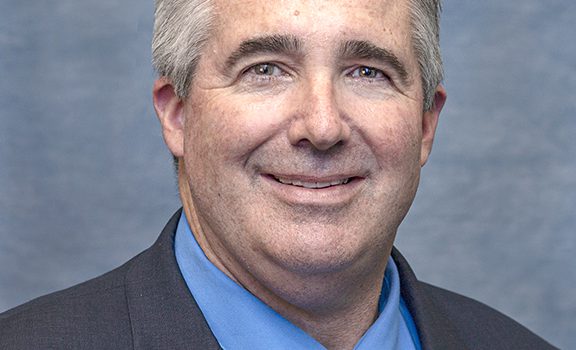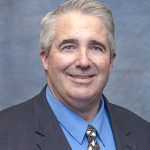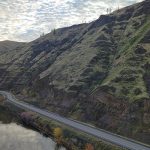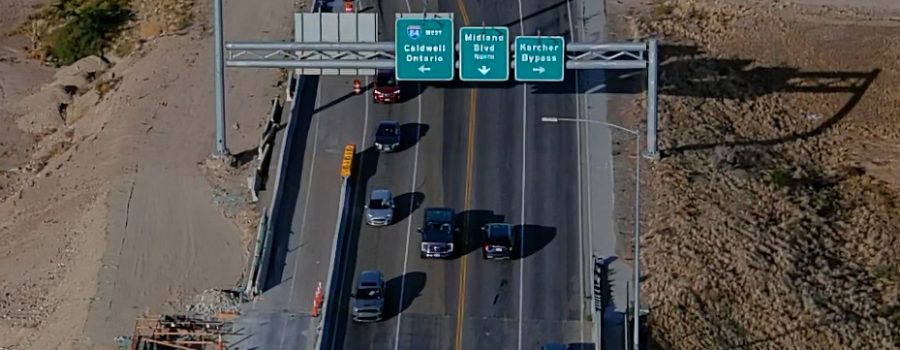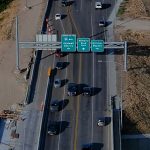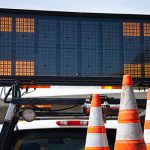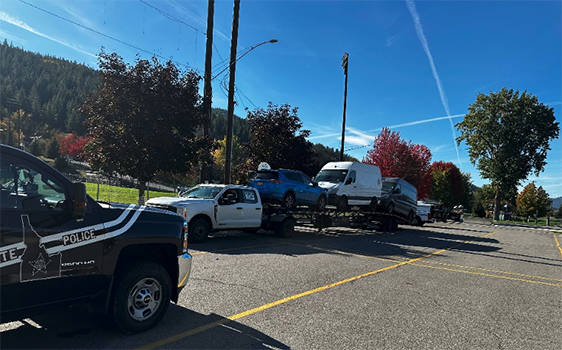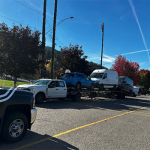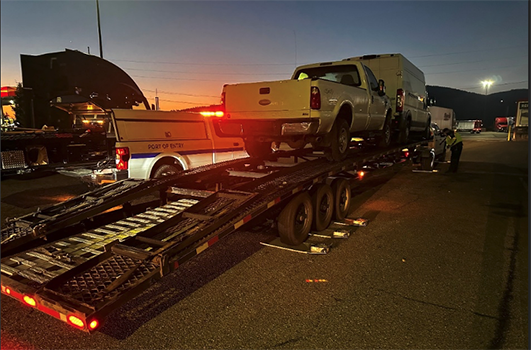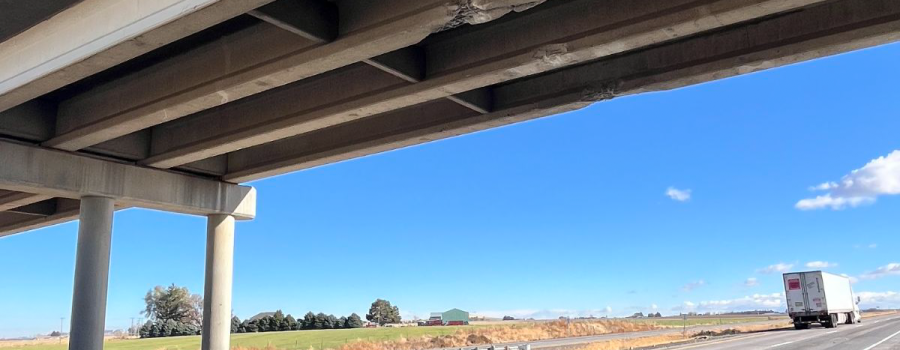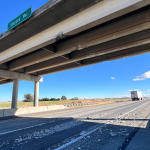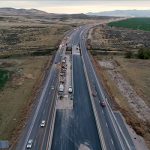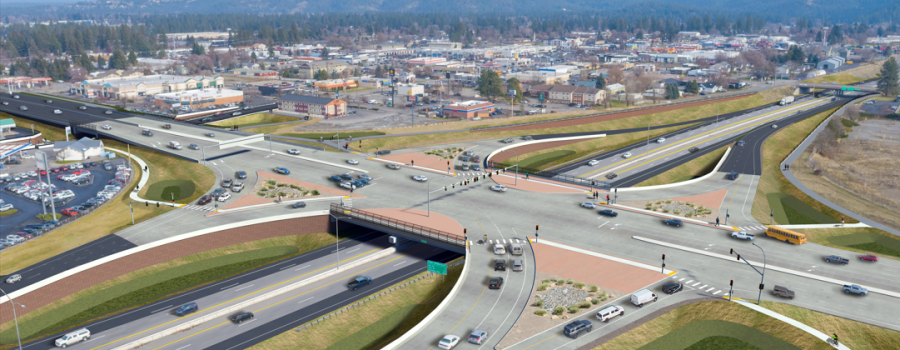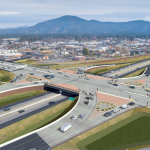WEDNESDAY, NOVEMBER 26 UPDATE:
U.S. Highway 12 near Arrow Bridge reopened all lanes of traffic as of 2:30 p.m. today. Crews completed rock scaling, excavation and cleanup work on the rocky hillside after a section of the slope shifted, causing loose rocks to create a safety hazard. Traffic may now travel on US-12 near Arrow Bridge without interruption.
As an additional safety measure, a concrete barrier has been placed near the edge of the roadway to protect motorists should any small rocks or debris come loose. Crews worked around the clock and removed an estimated 350 truckloads of debris from the hillside since Friday.
“A big thank you to both our construction partners and maintenance crews for mobilizing and tackling the slope so quickly,” Operations and Traffic Engineering Manager Jared Hopkins said. “I would also like to extend ITD’s appreciation to other partners including the Idaho State Police, Idaho Fish and Game, Nez Perce County Sheriff, Nez Perce County Road and Bridge, and the City of Lewiston Fire Department for their help orchestrating this multiday, emergency project on US-12.”
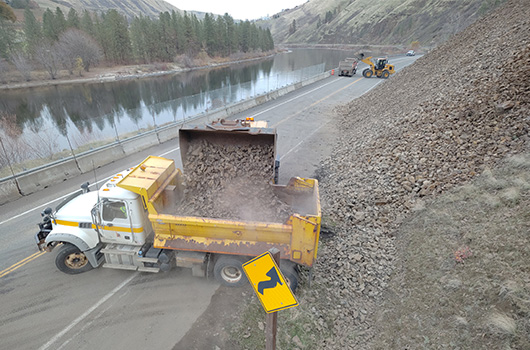
With holiday travel approaching, drivers are reminded to use Idaho 511 for the most up-to-date traffic and road condition information across the state. Travelers can visit the website at 511.idaho.gov, dial 5-1-1 or download the Idaho 511 app on any smart device.
TUESDAY, NOVEMBER 25 UPDATE:
U.S. Highway 12 near Arrow Bridge will re-open one lane at 4 p.m. this afternoon for commuters. The crack has been stabilized and loose rock over a large section of the slope has been removed.
Drivers should use caution when approaching the work zone and be ready to stop when instructed. Flaggers will allow alternating lanes of traffic to travel through with delays lasting up to 20 minutes. Overnight, operators will continue their systematic work of loading and hauling away debris.

ITD will continue to provide any necessary updates during the cleanup process. The most recent schedule can be found at https://itd.idaho.gov/news/us-12-emergency-rock-scaling-project-starts-today-to-reduce-likelihood-of-rockfall/.
Additionally, drivers should continue to use Idaho 511 for the most up-to-date traffic and closure information. Travelers can visit the website at 511.idaho.gov, dial 5-1-1 or download the Idaho 511 app on any smart device.
MONDAY, NOVEMBER 24 UPDATE:
The Idaho Transportation Department is scheduled to close U.S. Highway 12 near Arrow Bridge tomorrow from 9 a.m. to 5 p.m. to allow crews to continue addressing the emergency rock scaling project that started last week. Motorists will be redirected to alternative routes on U.S. Highway 95, State Highway 3, State Highway 13, and State Highway 162.
The highway reopened to one lane over the weekend after work progressed well, but additional heavy equipment modified with special attachments should arrive in the morning to address the remainder of the slope. This closure is necessary to keep the public safe.

ITD will provide any necessary updates as the work progresses throughout the day. However, motorists should plan for a closure extending to 5 p.m. The most recent schedule can be found at https://itd.idaho.gov/news/us-12-emergency-rock-scaling-project-starts-today-to-reduce-likelihood-of-rockfall/.
Additionally, drivers should continue to follow Idaho 511 for the most up-to-date traffic and closure information. Travelers can visit the website at 511.idaho.gov, dial 5-1-1 or download the Idaho 511 app on any smart device.
SATURDAY, NOVEMBER 22 UPDATE:
U.S. Highway 12 near Arrow Bridge has re-opened one lane this evening with flaggers allowing a single, alternating lane of traffic to pass through the work zone through the night. Drivers should plan for delays of up to 20 minutes.
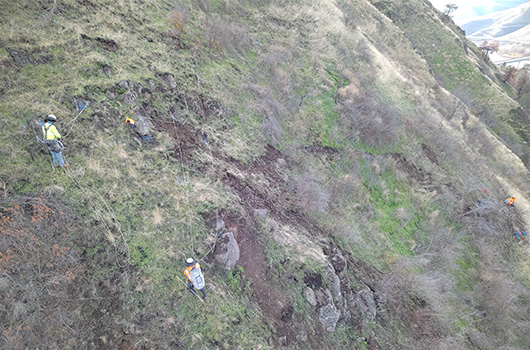
This is a dynamic project, with conditions that may change quickly so ITD encourages the public to use Idaho 511 for the most up-to-date traffic and closure information. Travelers can visit the website at 511.idaho.gov, dial 5-1-1 or download the Idaho 511 app on any smart device.
FRIDAY, NOVEMBER 21 UPDATE:
All lanes of U.S. Highway 12 near Arrow Bridge will temporarily re-open to traffic starting at 5:30 p.m. tonight until 8:00 a.m. tomorrow morning. Crews have made significant progress on the slope above US-12 and engineers have deemed it safe to open for traffic through the night.
Drivers should expect flaggers throughout the area to monitor traffic and the slope for safety.
Work will start again tomorrow morning, closing US-12 at 8:00 a.m. If all goes as planned, ITD aims to reopen the highway at 5:00 p.m. tomorrow evening. Idaho 511 is the best resource for drivers with updated traffic conditions, detour routes and closure information.
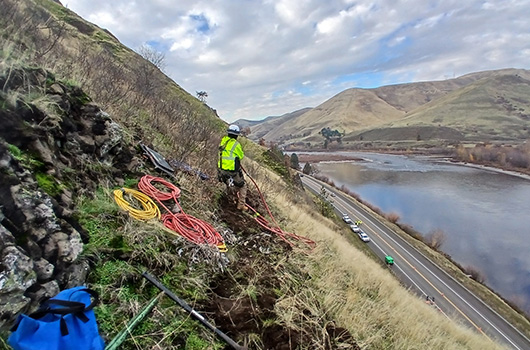
Please use caution through the area and be aware of the possibility of debris in the roadway as work continues to clear the slope of loose rocks through the weekend.
Up-to-date traffic information and the latest schedule for this project can be found by visiting 511.idaho.gov. Travelers can also dial 5-1-1 or download the Idaho 511 app on any smart device.
THURSDAY, NOVEMBER 20 UPDATE:
All lanes on U.S. Highway 12 near Arrow Bridge will close tomorrow at noon for rock scaling. Crews will proactively dislodge large rocky sections from the nearby slope under controlled conditions which decreases the likelihood of future rockfalls that create a safety hazard for drivers. Traffic will be detoured to alternative state routes on U.S. Highway 95, State Highway 3, State Highway 13, and State Highway 162.
The closure will stay in place around the clock until crews finish removing unstable rock. Because conditions on the slope can vary, a specific reopening time can’t be set in advance. Drivers should plan for an extended closure. However, if work progresses smoothly, the closure is not expected to last more than a day or two. At this time, we do not expect this closure to impact the Thanksgiving holiday.
“The decision to close the highway was made from a safety standpoint to protect travelers from falling rocks and to allow for a timelier cleanup process,” Operations and Traffic Engineering Manager Jared Hopkins said. “Heavy equipment will load trucks with the freshly fallen rocks and those will be hauled offsite.”
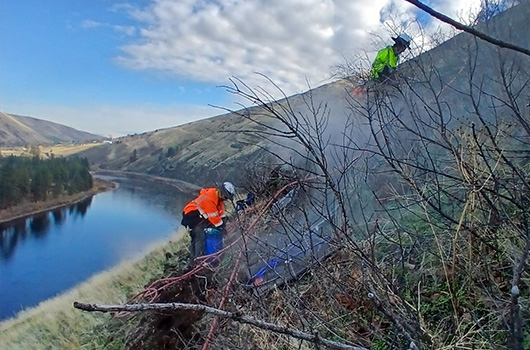
In addition, there will be increased truck activity outside of the work zone. Trucks will frequently be entering and exiting the highway on US-12 by Cherry Lane Bridge and near the south end of Arrow Bridge.
Experts have been monitoring the slope since Tuesday to ensure there is no danger to drivers and flaggers have been providing traffic control. Motorists should also pay close attention to road signs posted in the area.
Up-to-date traffic information can be found by visiting 511.idaho.gov. Travelers can also dial 511 or download the Idaho 511 app.
WEDNESDAY, NOVEMBER 19 UPDATE:
Rock scaling crews arrived on site today in preparation for the US-12 emergency roadside project near Arrow Bridge. The slope was evaluated and will be prepped for scaling.
Anchor points will be installed so that workers can climb the slope with their equipment. It is anticipated that the rock removal will begin on Friday.
While rocks are dislodged, flaggers will stop traffic at a safe distance. Delays will be 20 minutes at a time. If conditions change, a full closure may be implemented for safety.
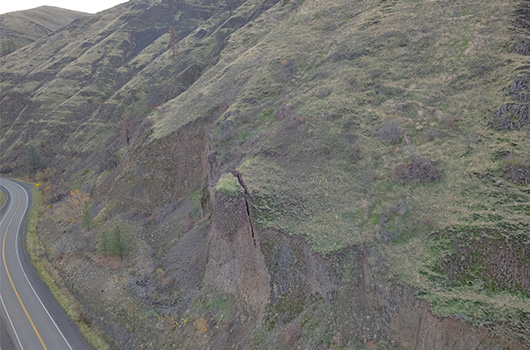
Up-to-date traffic information can be found by visiting 511.idaho.gov. Travelers can also dial 5-1-1 or download the Idaho 511 app.
TUESDAY, NOVEMBER 18 UPDATE:
The Idaho Transportation Department is conducting rock scaling work to stabilize the slope above U.S. Highway 12 near Arrow Bridge between mileposts 15 and 16. This effort began today and is expected to continue through the middle of next week. Work will intermittently affect traffic.
Scaling involves wedging and prying debris loose proactively, with rocks falling from the hillside down to the road. Specialized equipment will excavate rock at the top and flatten the slope.
“We are taking a proactive approach by dislodging any unstable material with professional scalers in a controlled setting,” Operations and Traffic Engineering Manager Jared Hopkins said. “For the safety of the traveling public, we’ll have flaggers there to monitor the slope and stop traffic while workers are scaling.”
An anticipated work schedule is as follows and is subject to change based on conditions:
- Tue., Nov. 18 – Thu., Nov 20: Flagging operations with 20-minute delays.
- Fri., Nov. 21 – Sun., Nov. 23: Full closure potentially all day and overnight. Motorists will be detoured to alternative route on State Highway 13 or State Highway 162.
- Mon., Nov. 24 – Wed., Nov. 26: Flagging operations with 20-minute delays until work concludes.
“If the slope becomes too unstable, an extended closure may be needed and drivers will be detoured to State Highway 13 or State Highway 162 in that case,” Hopkins said. “As work continues, we may allow traffic to flow without being stopped during work if it is safe to do so.”
Up-to-date traffic information can be found by visiting 511.idaho.gov. Travelers can also dial 5-1-1 or download the Idaho 511 app.
